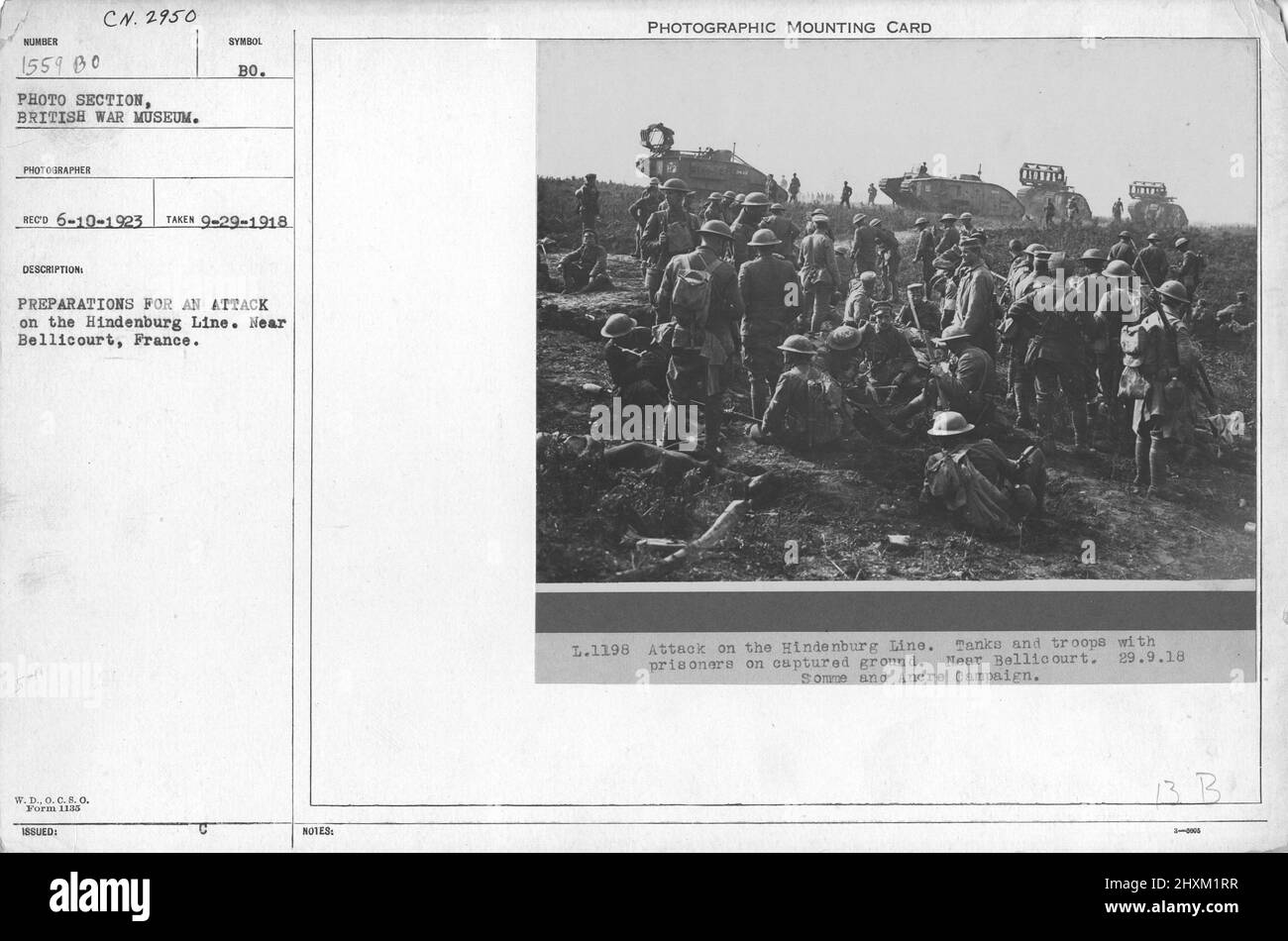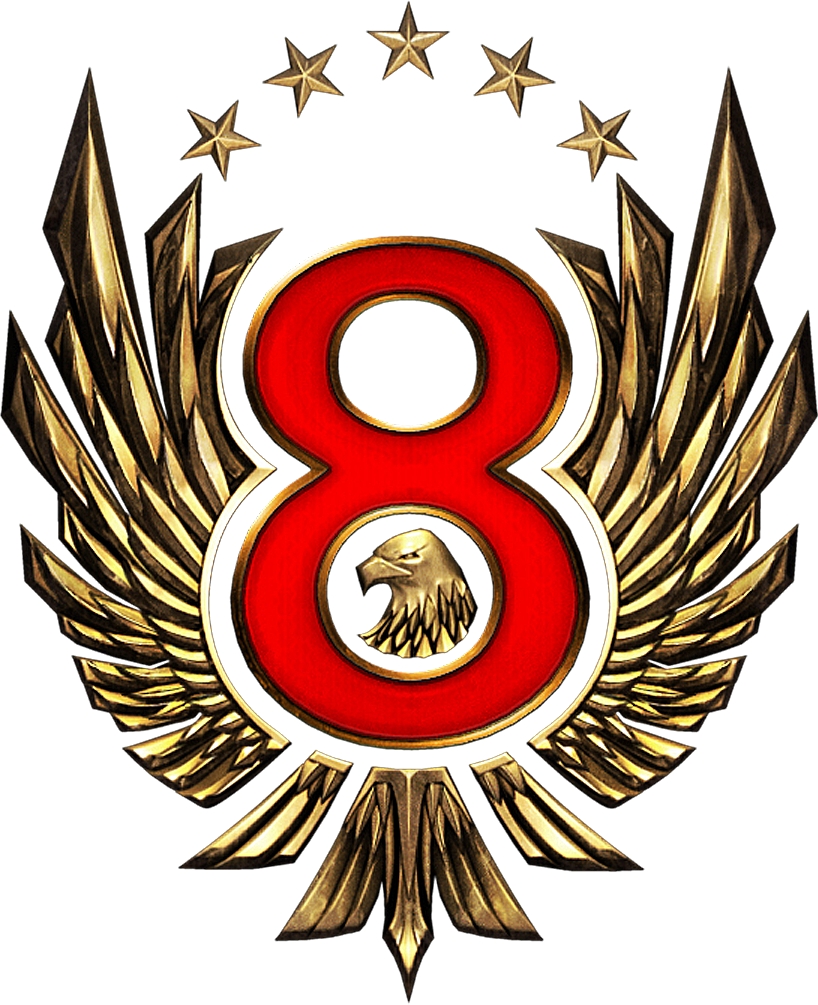Military Section 8 - The 8th Armored Infantry Division, or Section 8, is an elite military unit of the American Empire, nicknamed after the military term used to describe psychologically disturbed soldiers.
Prior to the division's creation, many of the Empire's frontline combat duties were performed by an army of genetically enhanced super soldiers whose mission was to destroy all threats to humanity's interstellar expansion. While these super-soldiers won numerous victories for the Empire and enabled it to rapidly expand across the galaxy, the unstable genetic enhancements began to mutate each soldier both physically and mentally, making them increasingly violent. Sensing the growing instability of this dangerous force, the Empire began to devise plans to replace the super soldiers with a more reliable but equally deadly military force.
Military Section 8
large.jpg)
Thus, new units such as the 8th Armored Infantry Division were formed from leading officers who pioneered the Armored Infantry's doctrines, tactics, and famous Burning In method of deployment. The newly formed 8th Armored quickly proved itself in combat and was given the Section 8 designation, as the missions performed by these soldiers were often considered suicidal. However, the great success of Section 8 proved the effectiveness of this new replacement force, and several armored infantry divisions were soon formed and expanded. Section 8 soon became part of the official frontline of the American Empire, the Armored Infantry, for an unknown number of years before deserting and eventually being rebelled by the genetically enhanced super soldiers, who would later form Orion's Spear.
Flags Of The United States Armed Forces
True to their name, the division's standard deployment method is ejecting Sky Crane dropships thousands of feet above the ground and Burning In to the battlefield. Thus, the term is given to the soldiers of this unit because they are the pioneers of the "mad" armored infantry tactics that ensured USIF supremacy throughout the galaxy, turning entire battles and wars in favor of the American Empire.
Once deployed, they use relentless fast-attack tactics against their enemies, using on-demand locations and vehicles to devastating effect.
Thanks to their relentless training, they use advanced USIF Powered Assault Armor with deadly efficiency. They also use powerful, state-of-the-art rail and plasma weapons, capable of fooling even the most heavily armored infantry units and vehicles. Last year's Section 8 was a massive sci-fi multiplayer shooter where you could play as a futuristic super soldier, equipped with powerful weapons, high-tech gadgets and a power suit that allows you to run so fast that you can literally kill your enemies by meeting them head first. While the first game was ambitious and the scope was arguably beyond its reach, developer TimeGate Studios is already back for round two with Section 8: Prejudice, a full-fledged sequel intended to improve on everything in the original game.
While the developer created the first game as a multiplayer shooter, he readily admits that the first game's single-player campaign, which was actually a multiplayer primer, left something to be desired. As such, the developer is working on a fully story-based single-player campaign that will deal with the conflict between Section 8's elite soldiers and their sworn enemies, a militia force known as the Arm of Orion (which, it turns out, has been secretly controlled by a shadowy faction of elite soldiers who may have been Section 8's predecessors). You can expect a full campaign to last around five hours, with nine missions taking place in different environments and voiceovers in between.
Soldiers From 8/9rar Performing A Section Attack Display At Gallipoli Barracks. (2019). [3600x2400].
We checked out a few missions in the single-player game, including the training mission (which starts at the Section 8 firing range), as well as a mission where we had to destroy guarded air turrets on the ground using the explosive bag device to blow them up . We then moved on to the next mission, a deployment of airdrops made possible by the removal of the anti-aircraft guns on solid ground. This gave us the chance to see the Section 8s drop game in action. When you fall, you're actually seeing your character from above, from a third-person perspective, as he plummets to the ground below. And because you can control the direction of its fall, if you're skilled enough, you might be able to split an enemy by landing directly on its head (this applies to both single player and multiplayer).
Next, we jumped over to see the new Swarm mode in action - a co-operative multiplayer mode where you and your friends must hold an outpost against hordes of increasingly tough enemies that start on foot and eventually bring heavy mechanized suits and even tanks. bump. Fortunately, you can too. Over the course of the match and in other multiplayer matches, your character will earn experience points that will actually carry over from match to match and will allow you to select various higher level deployable items such as stationary gun turrets, custom tanks, and the new hoverbike vehicle, which moves even faster than overdrive sprints (and is just as deadly if you run over an enemy at top speed).
In Swarm mode, your enemies swarm your base from all sides for a chance at the outpost command console - the key to victory or defeat in Swarm mode. You and your friends can use the console to switch weapons and gadget payloads during battle, but if the enemy captures this key point, you'll have a very short time to recapture the console until you and your teammates suffer the agony of defeat.

Swarm mode challenges you to defend a remote outpost against hordes of enemies in all-out combat.
Surveys: Special Ops Troops Doubt Women Can Do The Job
With Section 8: Prejudice, developer TimeGate clearly intends to fix all the problems of the previous game and make a much better game, based on both the studio's own observations and the community's many feedbacks. The game will be released early next year.
The products discussed here have been independently selected by our editors. may receive a share of the proceeds when you buy something on our website. FILE - In this Feb. 23, 2014 file photo, an Army SPC hoists a 44-pound section of a 50 caliber machine gun onto an M1 A2 Abrams tank during a physical requirements survey at Ft. Stewart, go. Surveys show men in US special operations forces don't believe women can meet the physical and mental demands of their command positions, and they fear the Pentagon will lower standards for integrating women into its elite units, according to interviews and documents. obtained by the Associated Press. (AP Photo/Stephen B. Morton, File)
WASHINGTON — Surveys show men in the U.S. special operations forces don't believe women can meet the physical and mental demands of their command positions, and they fear the Pentagon will lower standards for integrating women into its elite units, according to interviews and documents obtained by The Associated Press.
Studies surveying personnel found "major misconceptions" within special operations about whether women should be put into men-only jobs. They also raised concerns that department heads "would capitulate to political pressure, eroding training standards," according to a document.
Cavalry Division Divisional Troops Royal Army Medical Corps 5 Cavalry Field Ambulance And 4a Sanitary Section
Some of these concerns weren't limited to men, researchers found, but were found in women in special surgery jobs.
Dan Bland, director of force management for the U.S. Special Operations Command, told the AP that the research results "have already prompted us to do some other things in terms of force training."
About 68,800 people serve in the command, including 3,000 civilians. The main survey went to about 18,000 people in positions closed to women, and the response rate was about 50 percent. The high response rate, officials said, reflects the widespread interest in the topic.

The studies are part of the Pentagon's effort to open all military combat positions to women or provide reasons why some jobs should remain closed.
Paratroopers Jump Into The Holidays
An investigation, conducted by the RAND Corp., reflected doubts about whether women could meet general job requirements, found concerns that sexual harassment or assault could increase, and cited concerns about "unequal treatment" of special operations candidates and personnel . Some feared that if women were allowed into some jobs they would be treated harsher.
Investigation details have not been released. This was the first time Special Operations Command officials had publicly discussed the results.
Andy Hamilton, who works with Bland and has expertise in this area, noted that women in special ops roles were also concerned about wider inclusion.
"They are concerned that this could lead to a lowering of standards in what are currently our male-only occupations, and that would have an impact on them or the women who end up in those occupations," Hamilton said.
Interesting! Apparently You Can't Get Out Of The Ukraine Army With A Section 8! It's Encouraged!
Pentagon leaders lifted the ban on women in combat jobs in 2012, but gave the military services time to gradually and systematically integrate women into the male frontline. By January 2016, the military must open all combat jobs to women or explain why exceptions should be made.
Roles within the Special Operations Forces, including the secretive Navy SEAL and Army
Post A Comment:
0 comments so far,add yours